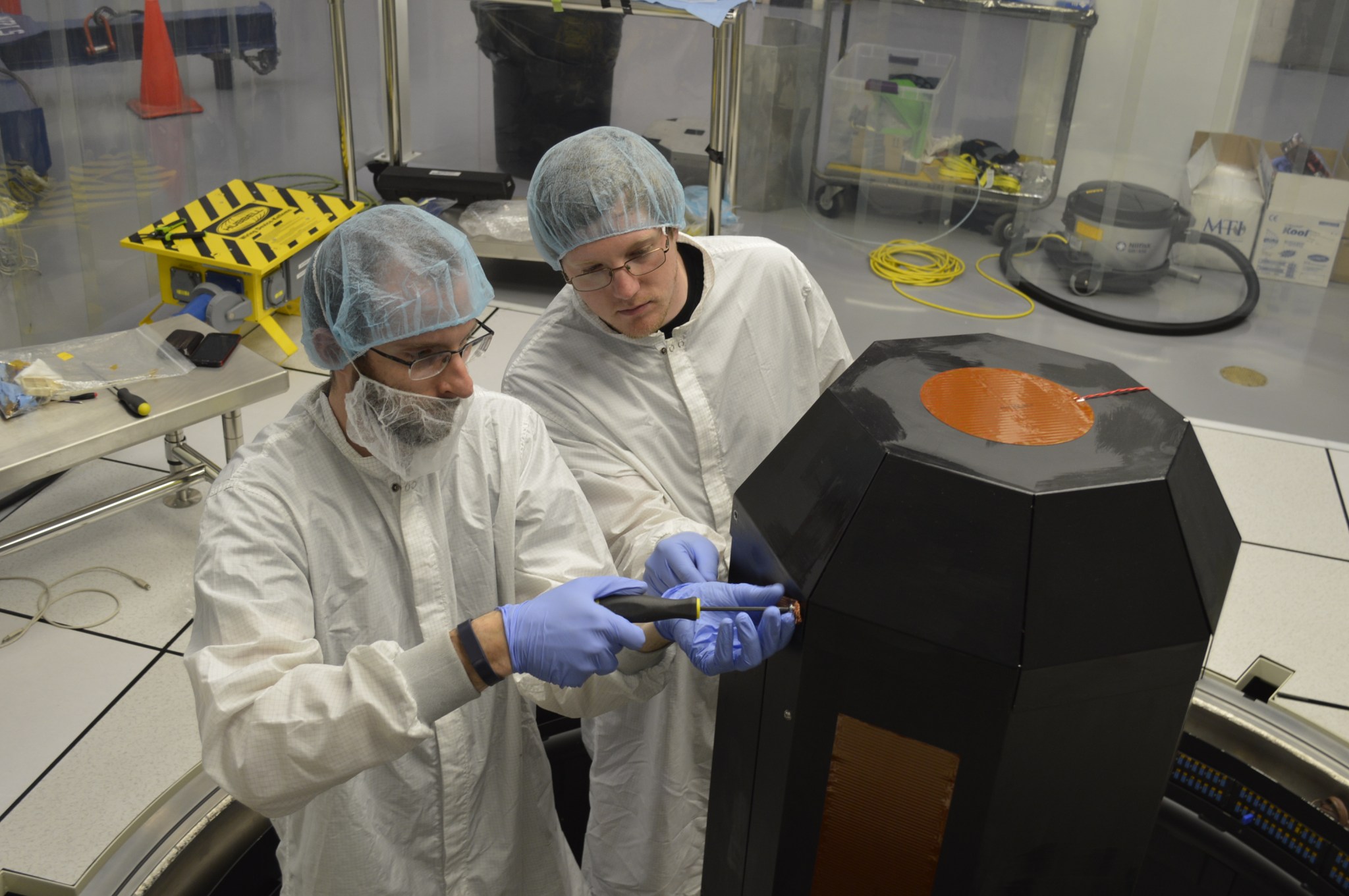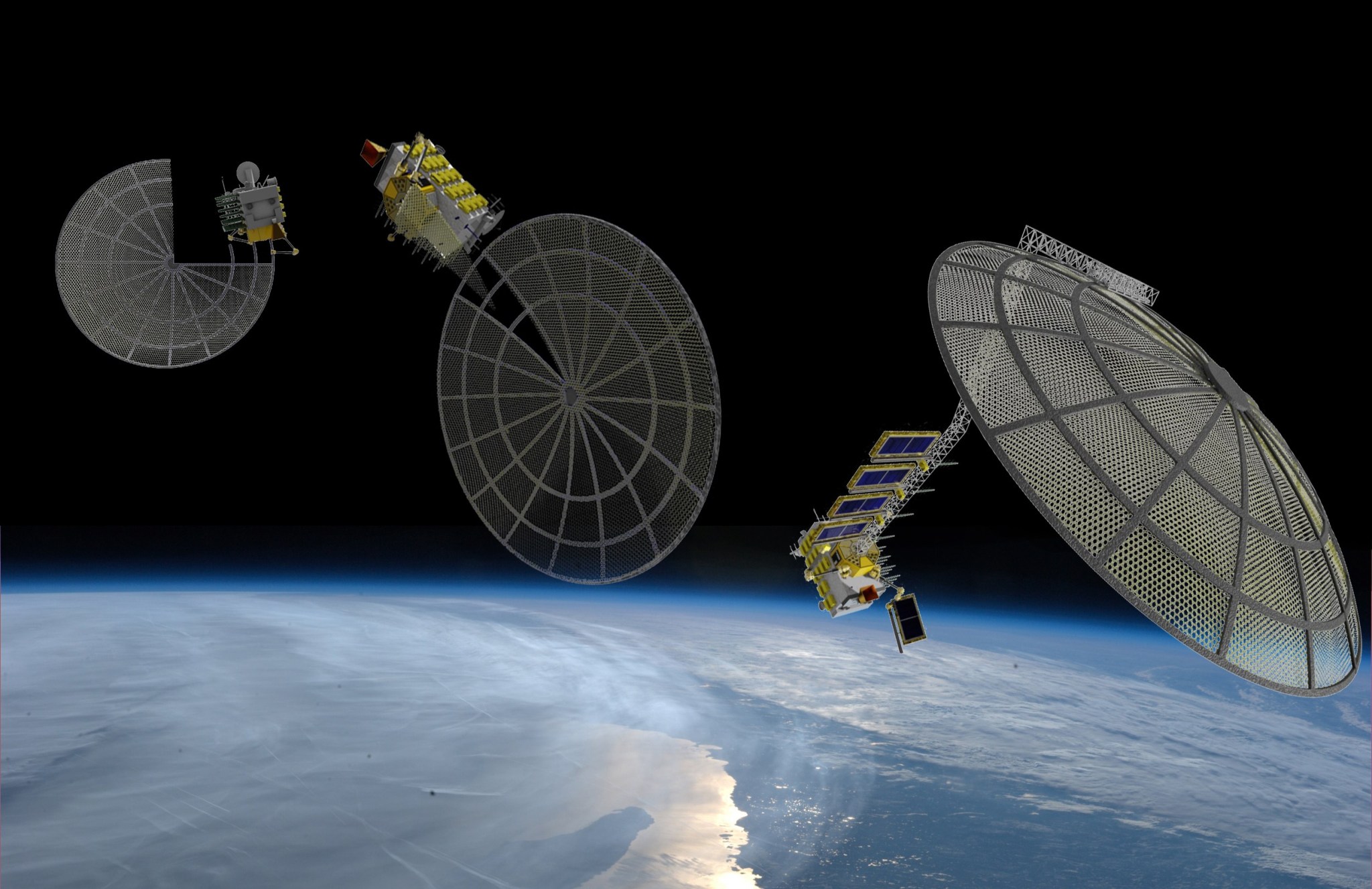Archinaut, a NASA Technology Demonstration Mission (TDM) project developing cutting-edge technology to build and assemble complex hardware and supersized structures on demand in space, achieved an unprecedented milestone this summer.
“To our knowledge, this is the first time additive manufacturing has been successfully tested on such a large scale in the vacuum and temperature conditions of space,” said Eric Joyce, Archinaut project manager for Made In Space Inc. of Mountain View, California, which spearheads the project for NASA.

The Archinaut test series, using Made In Space’s innovative Extended Structure Additive Manufacturing Machine, was conducted in a vacuum chamber in the Engineering Evaluation Laboratory at NASA’s Ames Research Center in Moffett Field, California.
The team conducted hundreds of hours of tests to complete the series. Working around the clock for much of June, they printed large beam segments — similar to those used to construct a variety of space structures — and subjected printing equipment and printed hardware alike to the pressures, temperatures and other rigors of deep space.
“This was a big step for us,” Joyce said. “It advances the technology — and gives us real confidence the hardware will do the job in space that it does here on the ground, enabling us to print sturdy, reliable structures of unlimited size. It was a history-making test.“
Archinaut is one of three “tipping point” projects NASA is funding in pursuit of groundbreaking new solutions under the umbrella of TDM’s In-space Robotic Manufacturing and Assembly (IRMA) project, sponsored by NASA’s Space Technology Mission Directorate. These projects help NASA determine whether the technology has been sufficiently matured to pursue flight demonstrations or for infusion into future exploration missions.
“We couldn’t be more pleased about Archinaut’s successful demonstration,” said Trudy Kortes, TDM program executive at NASA Headquarters in Washington. “In-space robotic manufacturing and assembly technologies are destined to be key building blocks for a thriving space infrastructure, and will enable robust future exploration missions across the solar system. Milestones such as this one are crucial steps toward that future.”
Building in space to curtail cargo launches
Better known as 3-D printing, additive manufacturing could offer solutions for quickly and cheaply mounting new space infrastructure missions to Earth orbit and beyond. Combined with robotic manufacturing and assembly, the technology could help NASA and its commercial partners remotely construct new habitats and hardware in space — without the costs or risks associated with flying heavy materials or structures via rocket from Earth to space.
Just as crucially, building to order in space frees future missions from the limitations of conventional spaceflight. “Until now, everything we have sent to space has been constrained by the volume available on various launch vehicles,” Joyce said. “That fundamentally limits the size and geometry of anything we send up.”
Additive manufacturing would nullify that obstacle. “Instead of launching a rocket with a complete vehicle crammed on board, what if we just launch feedstock — raw material — and do all manufacturing and assembly in space?” he added. “All the constraints go away, and rockets become more efficient at delivering cargo to space.”
The logical next step — following another test series in early 2018 to further hone the capabilities of the ESAMM prototype and refine Archinaut’s robotic manipulator — is full-scale, in-space flight demonstration. The team is already pondering its ideal project for that potential future mission: a massive communications satellite dish, or perhaps a supersized truss designed to robotically deploy solar panels? Time will tell, Joyce said.
Ultimately, Archinaut could evolve into a build-to-order space platform. Vehicles or satellites could dock to enable construction, assembly and integration of whatever space-optimized hardware or systems they require, Joyce suggested — permanently rewriting the way humans travel to space.
“This technology is absolutely transformative,” Joyce said. “Archinaut has the potential to dramatically advance discovery in space, reducing the time and money spent launching hardware and equipment and putting the focus on the human explorers who will use that made-in-space equipment to explore the cosmos.”
The Archinaut team includes lead subcontractor Northrop Grumman Corp. of Falls Church, Virginia; Oceaneering Space Systems of Houston, Texas; and Ames Research Center. TDM projects such as Archinaut mature groundbreaking technologies for infusion into government and commercial programs, dramatically extending human capabilities and opportunities in space. NASA’s Marshall Space Flight Center in Huntsville, Alabama, leads the TDM program for the agency.
For more information about Archinaut, visit:
http://madeinspace.us/archinaut
To learn more about NASA’s Space Technology Mission Directorate, visit:



























